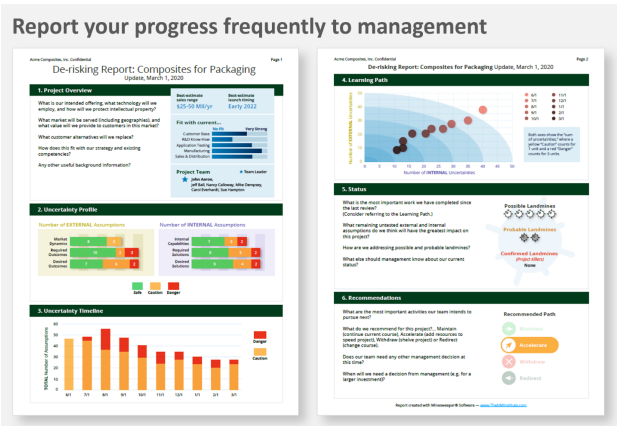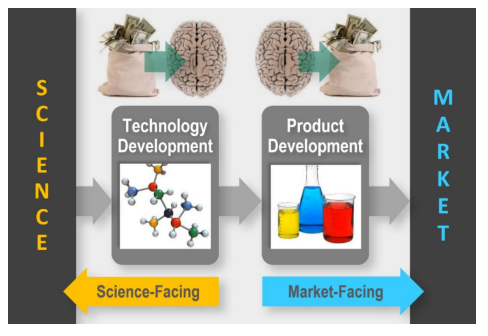The Merriam-Webster dictionary defines a solution as “something that is used or done to deal with and end a problem: something that solves a problem.” A technology is a solution. In the world of inkjet, the technology solution may be a discrete product like a printhead, an ink, a coating, a substrate, a protective laminate, a feeder system, a drying system – or several of those combined to create a larger solution. There are a lot of potential technology solutions in inkjet. Only some of these possibilities will ever be commercialized.
Applying a statistic from Booz and Company, 60% of those technologies that commercialize will fail within two years of launch. To improve success rates, let’s reframe the question. If our technologies are solutions, “what problem are we trying to solve?”
Identifying the Problem to Be Solved
Let’s look at an example using the copier. On October 22, 1938, Chester Carlson made the first copy that led to the Xerox machine that later dominated the marketplace. An NPR article describes those early machines as “bulky and cumbersome, weighing nearly 650 pounds and being prone to spontaneous combustion.” Despite the risks, the product was in high demand. Why? It solved a problem.
To understand more, we have to examine the situation at the time. This might be called, the job to be done. How were copies made prior to Xerox? I think back to grade school history classes or trips to Epcot Spaceship Earth and have visions of monks spending long hours hand copying text, falling asleep at their desks. I think about using carbon paper in my mom’s craft shop to make credit card impressions to take payments. How about the hectograph that could generate 50 copies at most? Certainly an improvement for the poor monks, but very low quantities versus today’s standard. Let’s not forget the mimeograph that was often messy and resulted in ink blobs.
In all these cases, the problem to be solved is minimizing the time, mess and defects involved in copying information. In looking at the job to be done along with the many alternatives for how to do it, Mr. Carlson and later Xerox invented a technology that solved the problem so well that it became mainstream. Who hasn’t used a Xerox copier? Or referred to “xeroxing” when making copies on another brands device?
Fast forward to today’s world. What problems does the inkjet technology you are developing solve better than the next best alternative?
Six Steps To Successfully Commercialize Technology
According to Dan Adams, founder and president of The AIM Institute, business-to-business companies (like many of us in inkjet) can develop and successfully commercialize new technologies using six steps:
- Separate your technology projects from product development initiatives
- Select your first target market segment and understand its unique requirements
- Investigate all assumptions that “must” be true.
- Explore assumptions about customer needs first.
- Try to kill your project quickly.
- Test the next market segment (maybe).
Technology Projects are Science-Facing. Product Development is “Market-Facing”
Inkjet, and it’s component parts, is our technology. It is science-facing. The development of inkjet capabilities took investment dollars. After years of research, the investments have resulted in knowledge. Product development in inkjet turns that knowledge back into money by providing specific solutions to customer unmet needs. Examples of product development are represented by the range of inkjet presses on Device Finder serving the production, label, packaging and industrial markets. All of these product developments provide customers printing solutions to their unique problems.

Technology developments are science-facing. They turn money into knowledge. Product development is market facing and turns knowledge back into money.
Select your first target market segment.
Your technology development may result in new products for several market segments. Consider the many end-use markets that leverage inkjet printing: books, direct mail, commercial printing, roll-to-roll textile, direct-to-garment-textile, film-to-fabric, narrow web label, wide format graphics, folding carton and the growing corrugated printing market. Why did inkjet start with one market and then move into others? Why is it continuing to expand to even more applications? It goes back to our Xerox example and understanding the unmet customer needs and customer jobs-to-be-done. Customer outcomes and jobs-to-be-done are unique to each market segment. Therefore, it makes sense that product developments (i.e. solutions) would also be unique to each segment.
Investigate all assumptions that “must” be true.
“Be nervous about hidden assumptions,” Dan cautions. “These are factors that must be true for your new product to succeed, which are not properly addressed. Think of these as potential “landmines” that could blow up your project’s schedule, budget, or viability. Identify them as soon as possible. After all, no one steps on a landmine they can see.”
It’s critical to any new product development effort that we think through our assumptions. As one example, for our inkjet solution in flexible packaging to succeed, it must be food safe. This is an example of a key customer outcome. What other customer outcomes, market dynamics and internal capabilities must be considered in your assumption list?
Explore assumptions about customer needs first.
The list of assumptions may be daunting. So where do we start? Dan’s advises, “Our research shows that misunderstanding customer needs is the primary cause of new product failures. This is especially true in unfamiliar markets. Also, if you’re a B2B supplier you can understand customer needs quickly and at very low cost.”
Many of us in inkjet are indeed B2B suppliers so it should be easier for us to understand our customers’ unmet needs down to the last business in the supply chain than for B2C suppliers. This may even present an opportunity for supplier expert collaboration to truly understand how printing fits into the overall production process of an end-use market.
Try to kill your project quickly.
Many development teams struggle to keep their project alive. Dan argues that it’s better for budgets, reputations and customers to try to kill projects quickly. Imagine starting your product development meetings with the most critical view, “how are we going to kill our project today?” If the team cannot find a reason to kill the project, it is an indicator that unmet needs and assumptions are being validated and the project is likely to be a success.
Test the next market segment (maybe).
Dan reminds us that when you commercialize technology, one of three scenarios usually takes place:
- You succeed with the first market segment and then target a second.
- You fail with the first market segment and then target a second.
- You fail with the first market segment and stop.
The difference between the second and third scenarios is determined by why you failed. Was it for market-specific reasons or something else? If the first market didn’t value short run printing at lower costs, another market may. However, if we could not successfully scale our product from prototype to full scale production, the failure is attributable to our lack of capabilities and the project should be killed. Be sure to communicate your findings to management. They are likely to appreciate the team’s efforts to ensure the company focuses on delivering solutions that can be commercialized.

This example report provides a market overview, the assumptions being tested, progress regarding assumption validation, the team’s learning path, status and recommendations for next steps.
Summary
There is no guarantee that new technology can be successfully commercialized. But these steps provide a road map to identify the best market for a new technology as quickly as possible, how to develop a product based on that technology to address known and validated customer needs, and when to stop spending money and effort on dead-end projects quickly.
Want to Learn More?
Join me and Dan Adams for a webinar on “How to Commercialize Inkjet and Consumables Technology in 6 Foolproof Steps.” We’ll go deeper on how to:
- Clearly delineate technology development and product development.
- Gather and investigate all key assumptions to avoid project landmines.
- Understand the front-end steps that will eliminate most commercial risk in new product or service development.
- Change the dynamics of reporting to management… for the better!
Please register and join us on Wednesday March 30 at 1 p.m. ET. Registration for this webinar is free and attendees will also receive a valuable white paper on a methodology for commercializing technology to reinforce the webinar content.

